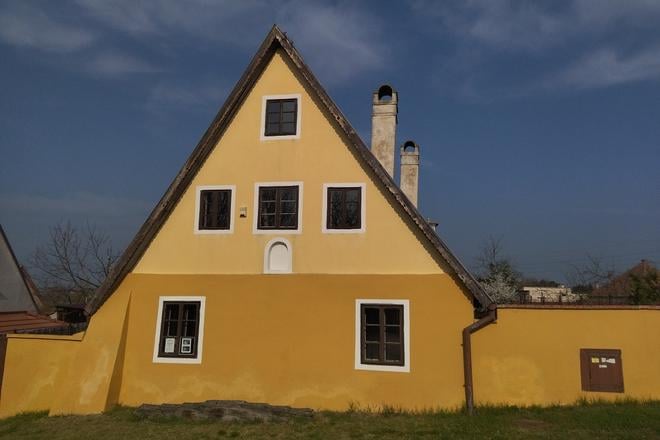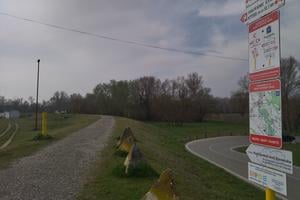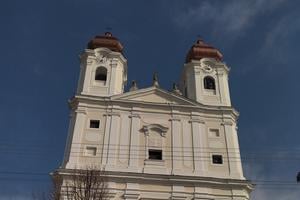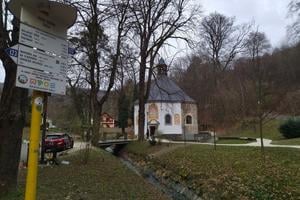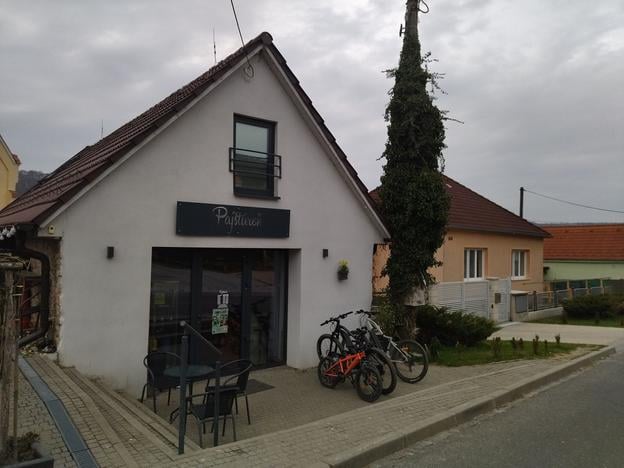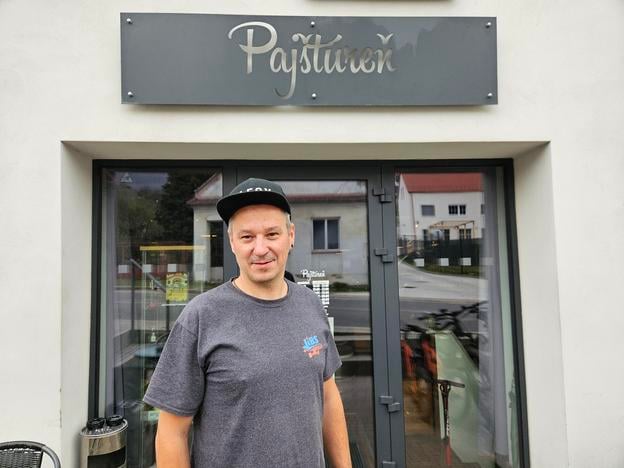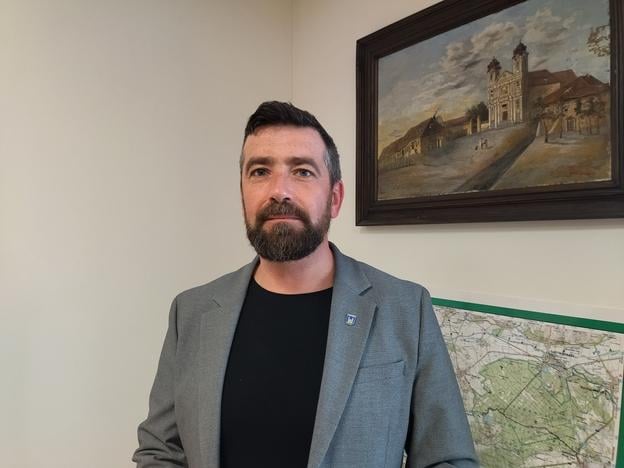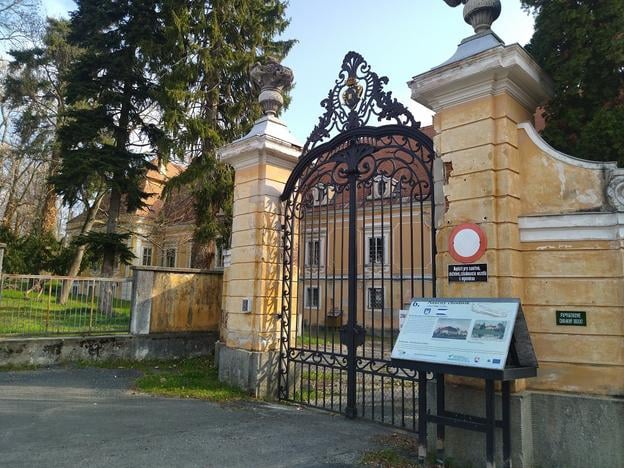You can read this exclusive content thanks to the FALATH & PARTNERS law firm, which assists American people with Slovak roots in obtaining Slovak citizenship and reconnecting them with the land of their ancestors.
Tucked behind the forested folds of the Little Carpathians, the Záhorie region in western Slovakia was where our journey began. From there, we ventured across the Malacky district, a tranquil stretch of western Slovakia just north of Bratislava.
In the village of Borinka, nestled at the foot of the hills, we stopped at Pajštúreň, a café named after the nearby ruins of Pajštún Castle, which perch high in the Little Carpathians.
Martin Nespala, the owner of the café, describes it not merely as a local food spot, but as a gathering place for the community. Though he once worked in IT, he says he has always felt a pull towards hospitality.
“My great-grandfather and grandfather were innkeepers,” Nespala says. “The communists didn’t get the chance to take away the local pub because my grandfather managed to sell it beforehand. Even so, it was eventually nationalised and gradually fell into ruin,” he adds, reflecting on a family legacy that once revolved around a village taproom.
Ice cellar turns into cosy café
After the fall of socialism in 1989, his father was quick to seize a new opportunity, opening a modest buffet. Years later, the family turned their attention to an old house left behind by his grandfather—once used as an ice cellar. Over the course of two years, they painstakingly restored the structure to its original form, revealing its stone walls and preserving the timber ceiling.
The café officially opened in 2015 and will mark its tenth anniversary this year. Today, it stands as a warm, inviting space with a spacious cellar beneath, where wine and rum tastings are held. Remarkably, it has no competition in the village: the local pubs have long since faded into memory.
Cemeteries in Malacky district
For many foreigners tracing their Slovak heritage, finding the burial sites of their ancestors is a deeply personal journey. To aid in this quest, we have provided maps of the districts we visited, with every cemetery carefully marked. Here you can find cemeteries in Malacky district.
When The Slovak Spectator visited at the end of March, a handful of guests were gathered inside the café. Judging by the cluster of bicycles propped outside, most appeared to be cyclists. Along with hikers and tourists exploring the Little Carpathians, they make up the café’s regular clientele. Its appeal is enhanced by its location—next to the village church and right at the main crossroads.
“Summer is our busy season; in winter, we rely on domestic guests to get by. We also host film screenings and quizzes,” says Nespala, reflecting on the café’s seasonal rhythm. In recent years, he notes, the number of tourists has begun to outpace that of local visitors.
Untapped potential
According to Martin Nespala, the owner of Borinka’s Pajštúreň café, the village is falling short of its tourism potential. Beyond a handful of food stalls and his own establishment, accommodation is virtually non-existent. A single cottage tucked away in the Carpathians is reserved exclusively for corporate team-building events.
Most visitors, he says, arrive from nearby Bratislava, with a few venturing in from the Czech Republic or Austria. While some choose to stay overnight, persuading them to linger beyond a weekend is a struggle. “If they aren’t passionate hikers or cyclists, they’ll likely get bored here,” Nespala admits.
He points to the village’s neglected car park as a missed opportunity—both practical and financial. Properly maintained, it could generate revenue to fund improvements, such as completing cycling paths to the neighbouring towns of Stupava and Lozorno. From there, visitors could connect to the Morava River and continue their journey into Austria.
“People are bringing money right to our doorstep—we just need to pick it up,” he says. Among his suggestions are horse-drawn carriage rides to Medené Hámre, a former forest settlement, which he believes would appeal to families with children. He also proposes offering electric scooter and bicycle rentals to make exploring the area more accessible.
Marianka pilgrims
Tourism can leave a lasting imprint on the life of a village—something clearly visible in the neighbouring settlement of Marianka, one of Slovakia’s most storied pilgrimage sites.
At the entrance to a sprawling park dotted with religious monuments stands Pútnický Mlyn, or Pilgrim’s Mill, a guesthouse and restaurant catering to travellers. Nearby, a grand historic building offers accommodation for pilgrims, just steps from the Basilica of the Nativity of the Virgin Mary. The site is surrounded by chapels, a replica of the Lourdes Grotto, and a sacred spring long believed to have healing properties.
Lining the park’s edge are rows of wooden stalls, which in summer bustle with the sale of souvenirs and refreshments. In spring, however, they sit shuttered—lending the area a slightly forlorn air.
Even so, the site’s potential extends far beyond religious devotion. From the chapels, well-marked cycling routes and hiking trails weave their way into the forested slopes of the Little Carpathians, inviting a broader kind of pilgrimage—into nature.
Habans as an attraction
At the northern edge of the Malacky district lies the village of Veľké Leváre, where the hum of renovation work fills the air outside the municipal office. The morning bustle is punctuated by the clatter of construction, with the front steps nearing completion. Richard Nimsch, the village’s mayor, offers a quick apology for the disruption, then ushers us in with a warm smile.
“We have ambitious plans for the village,” he says, noting that essential infrastructure remains the top priority. Upgrades to the sewage system, water supply, and local schools come first; tourism, he adds, will follow. One promising project already under way is a cycle path linking Malé and Veľké Leváre—a car-free, illuminated trail he hopes will draw more visitors.
Veľké Leváre offers a handful of quietly compelling attractions. Chief among them is the Habánsky dvor, a cluster of historic buildings that once housed the Habans—a community of Protestant craftsmen who arrived in the Záhorie region in the 16th century. Funded in part by the European Union, the site now includes a small museum and open-air amphitheatre. The Habans brought with them a tradition of fine ceramic and blade craftsmanship and established a mill, brewery and spa, traces of which still shape the village's cultural fabric.
“The descendants of the Habans from Canada, Switzerland and Germany often visit us,” the mayor says. “Sometimes entire coachloads arrive, and they’re amazed at how well-preserved and beautifully restored these houses are.”
But the village is grappling with a familiar rural dilemma: a lack of accommodation. While one Haban house is listed on Airbnb, there are no guesthouses or restaurants to speak of. The mayor sees room for growth — perhaps a hostel that could serve not only tourists but also seasonal workers in the region.
Veľké Leváre is also home to the annual Haban Festival, held each July. The celebration brings music, crafts and stalls offering distinctive local fare. Among the highlights is the Haban cake — a nut-and-raisin confection served with elderberry syrup, a favourite the mayor is quick to recommend.
Huge church and a neglected mansion
The Roman Catholic Baroque Church of the Name of the Virgin Mary, built in the 18th century, is among the most striking landmarks in the village. Commissioned by the Viennese Archbishop and Cardinal Žigmund Kolonič, its twin spires rise with quiet authority, commanding both reverence and attention.
Not far from the church stands another relic of the Kolonič family’s legacy: an 18th-century mansion, now sadly fallen into disrepair. Though designated a cultural monument, the grand building—once a psychiatric hospital during the socialist era—has stood abandoned since its closure in 2004. It is surrounded by an expansive park, rich in potential for community life but left dormant.
“We tried to negotiate with the University Hospital of Bratislava for access to the property, but they declined, citing safety concerns,” says Mayor Richard Nimsch. The estate is currently on the market for €3.5 million. “If restored, it could become a major driver of tourism for our village,” the mayor adds, hopeful that someone might yet see the promise behind the crumbling walls.
Better to cycle along Morava River
From Veľké Leváre, visitors can follow a cycle path to Malé Leváre, tracing the meandering course of the Morava River. Along the route lies a recreation area anchored by the Rudava autocamp, where swimmers take to the lake and sun-seekers sprawl across stretches of sandy beach. Once shaped by winds sweeping in from the Morava, Záhorie was rich in sand—a legacy still visible today in the scattered dunes that remain.
Beyond the village of Gajary, where oil is still extracted from the earth, the path leads to Slovakia’s westernmost village, Záhorská Ves.
Záhorská Ves sits quietly on Slovakia’s western edge, pressed against the Austrian border, with a single ferry linking the two countries across the Morava River. A cycle path traces the river’s course from Devín to the Czech border, offering a scenic route along this natural frontier.
Arriving from Austria, however, visitors may be met with a less-than-charming first impression: a crumbling industrial building and the remnants of an old border crossing greet travellers before anything else. The structure, incongruously, houses both a museum and a flower shop.
Yet these initial impressions quickly fade. Within the village, an educational cycling trail invites visitors to linger. Twenty-one signboards dot the route, each revealing a chapter of the village’s past.
For those wishing to cross into Austria by bike, the nearby village of Vysoká pri Morave offers a more modern solution. Just beyond it, a newly built bridge spans the river, connecting cyclists directly to the Austrian town of Marchegg.
This corner of Záhorie is best discovered on two wheels, not four—where the pace is slower, and the stories are easier to hear.


